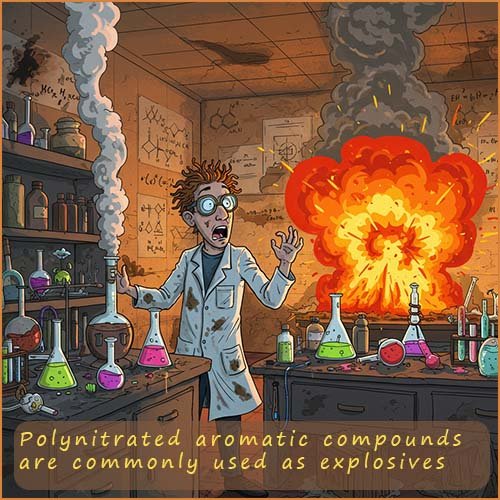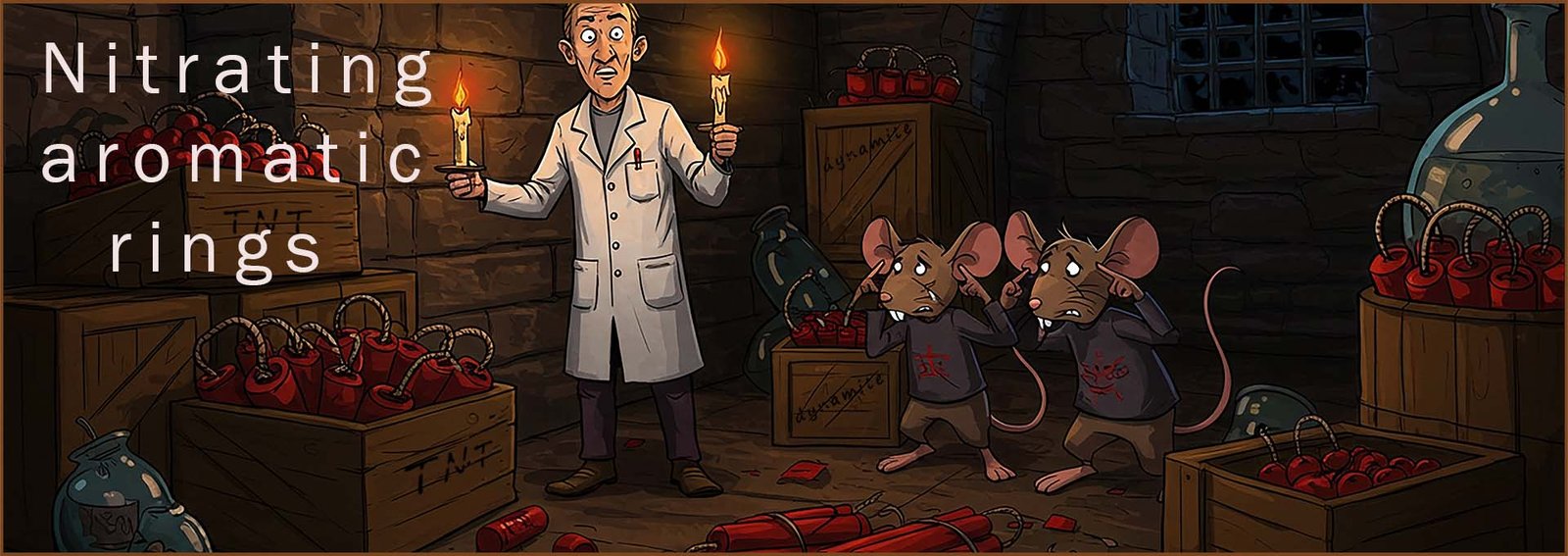

The nitration of aromatic rings is an important reaction industrially since it produces a range of valuable compounds which are used mainly in the chemical industry as intermediates in the production of a wide range of industrial products, including dyes, explosives, pharmaceuticals, pesticide, and plastics and dyes. Like all reactions involving aromatic rings this reaction is an example of an electrophilic substitution reaction. An equation for this electrophilic substitution reaction is shown below:
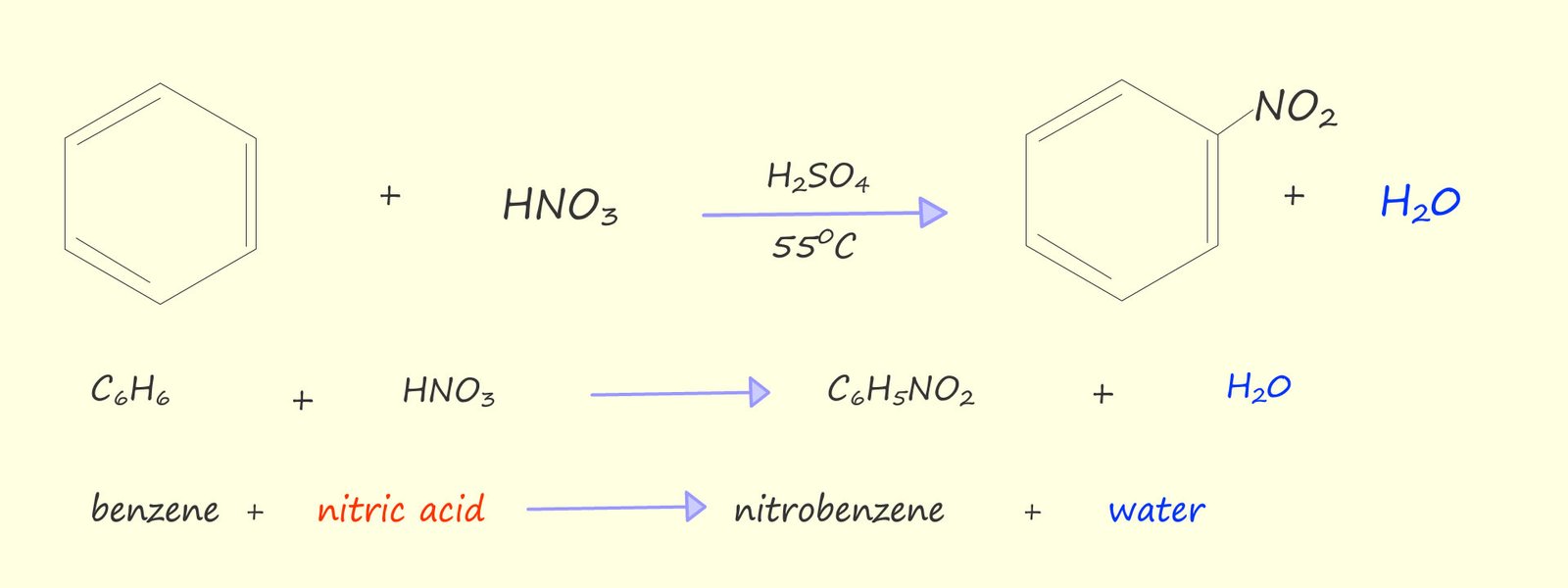
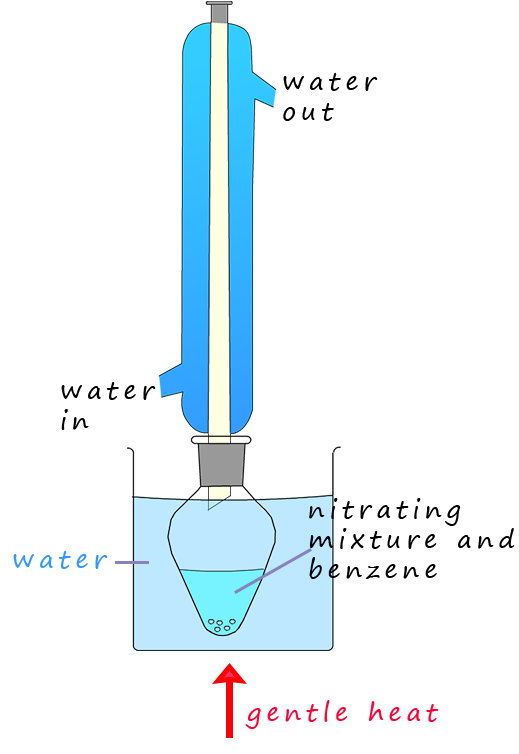 The electrophile which is used
in this nitration reaction is the
nitronium ion or nitryl cation (NO2+) ion.
The nitronium ion (NO2+) is
generated by the reaction of concentrated nitric acid
with concentrated sulfuric acid. In the nitration reaction the
sulfuric acid
acts as a catalyst, it is needed to generate the nitronium ion (NO2+) but is regenerated again during the reaction. The end result of a nitration reaction on an aromatic compound such as benzene is that the nitro group (-NO2) replaced or substitutes for one
of the hydrogen atoms on the aromatic ring.
The electrophile which is used
in this nitration reaction is the
nitronium ion or nitryl cation (NO2+) ion.
The nitronium ion (NO2+) is
generated by the reaction of concentrated nitric acid
with concentrated sulfuric acid. In the nitration reaction the
sulfuric acid
acts as a catalyst, it is needed to generate the nitronium ion (NO2+) but is regenerated again during the reaction. The end result of a nitration reaction on an aromatic compound such as benzene is that the nitro group (-NO2) replaced or substitutes for one
of the hydrogen atoms on the aromatic ring.
If benzene is warmed under reflux conditions (as shown opposite) to between 50-550C with a 3:1 mixture of concentrated sulfuric acid and nitric acids the main product of this reaction is a yellow oily liquid, nitrobenzene. If the temperature is allowed to rise above about 550C then it is likely that more than one nitro group (-NO2) will be added to the aromatic ring; as shown in the image below.

The mixture of
concentrated nitric and
sulfuric acid is needed because these two acids react together to produce the
nitronium ion (NO2+)
electrophile which will substitute for one of the hydrogen atoms on the benzene ring.
Polynitrated aromatic compounds are used extensively as high explosives; for example:
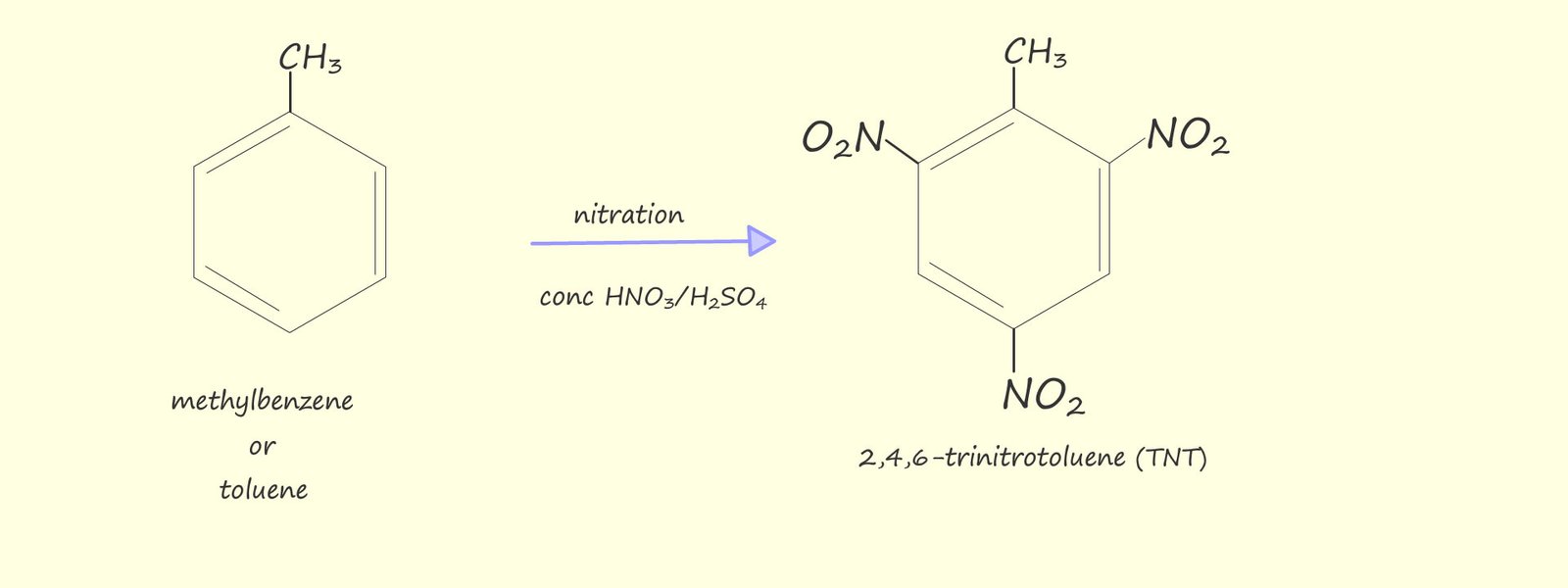
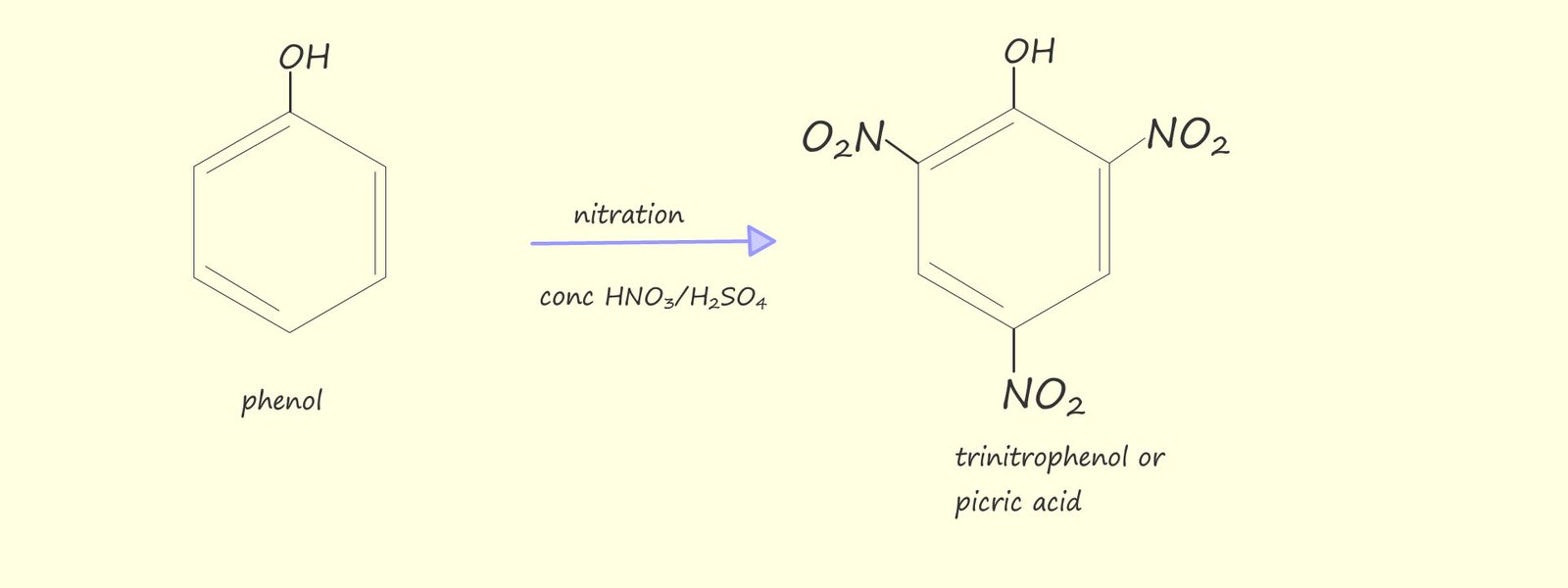
Sulfuric acid (H2SO4) is a stronger acid than nitric acid so when the two are mixed the nitric acid essentially acts as a base and is protonated by the sulfuric acid; this is shown in step 1 of the mechanism for the formation of the nitronium ion (NO2+); shown below:

In step 2; shown below the unstable intermediate cation breaks down to form the nitronium ion (NO2+) and a molecule of water; as shown below:

An overall equation to show how the nitronium ion (NO2+) is formed from the acid-base reaction of concentrated sulfuric and nitric acids is shown below:
The delocalised pi (π) electrons in the benzene ring will now attack the nitronium ion (NO2+) and form a resonance stabilised intermediate arenium carbocation. This is likely to be the slow step in the nitration reaction since it involves disrupting the delocalised pi (π) electrons in the aromatic ring.

After the addition of the nitronium ion (NO2+) the aromaticity; that is the delocalisation stability offered by the presence of the delocalised pi electrons will be destroyed, however the loss of a proton (H+) in the mechanism shown above will quickly restore the aromaticity within the benzene ring and regenerate the sulfuric acid catalyst. In the mechanism shown above the hydrogen ion (H+) is removed from the unstable intermediate arenium carbocation by the hydrogensulfate ion (HS04-) but it is also possible for any other base such as water which is present to remove this hydrogen ion (H+).
You can of course use the circle notation instead of the Kekulé notation to represent this electrophilic substitution reaction; the choice is yours as both representations of the aromatic ring are correct.

In the mechanism above when the nitronium ion (NO2+) adds to the benzene ring the stability associated with the delocalisation of the pi(π) electrons is lost. In order to help stabilise this intermediate arenium cation it will undergo resonance stabilisation, as shown in the image below. The red portion of the resonance double headed arrow representations the movement of electrons as you travel from left to right across the page while the purple coloured portion of the arrow represents the movement of electrons as you travel from right to left across the page.

